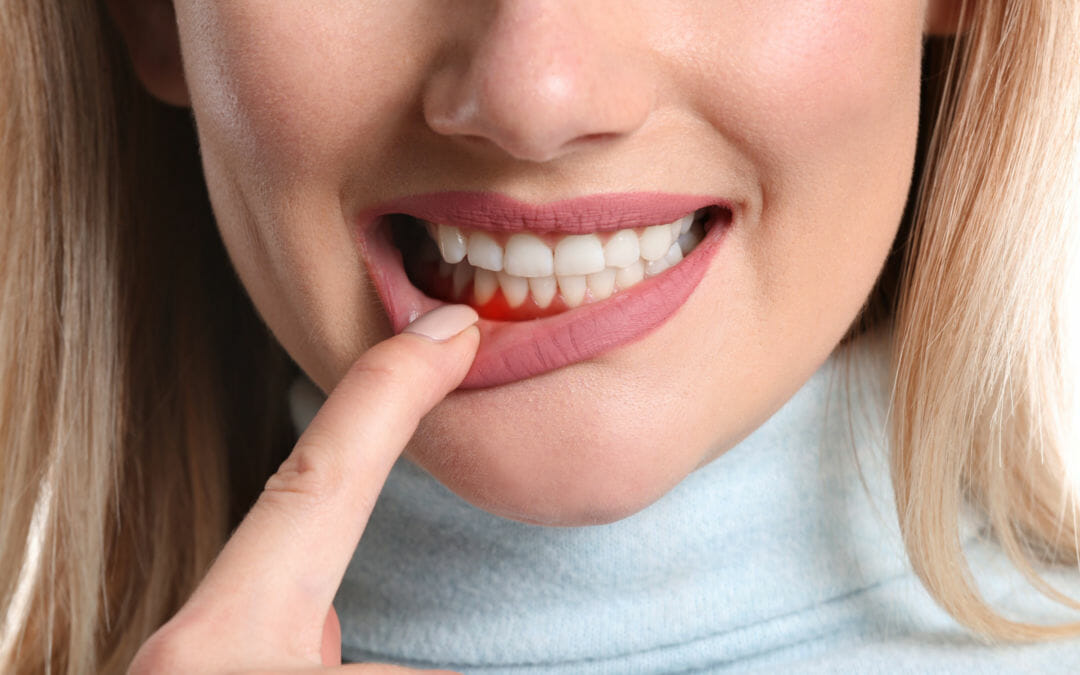Keeping your mouth healthy and your smile beautiful for life requires careful attention to your gums. The gums are responsible for holding your teeth roots firmly in place, but they can be damaged by something as simple as forgetting to brush as often as you should. Over time, the gums become infected or damaged by abrasive plaque building up along the edges of the teeth. Gum disease is common, but it’s not inevitable and it can be prevented and treated.
Keeping track of the earliest signs of periodontal disease will help you reverse any damage caused before it becomes permanent. Work with your doctor to spot any of these common symptoms of developing gum disease.
Lingering Bad Breath
One of the earliest warning signs of gum disease is often halitosis, or bad breath. This odor issue will return a few hours after you brush your teeth, even if you haven’t eaten or drank anything. It’s caused by the bacteria that are settling into your gum tissue thanks to pockets forming between the tissue and the tooth’s surface. If you find yourself using mouthwash or breath mints throughout the day despite good oral hygiene, talk to your dentist about the potential of gum disease.
Redness Around the Gum Edges
Reddening at the margins between teeth and at the edges of the gum line is a clear indicator of gum disease. Talk to your dentist as soon as you see a symptom like this appear. If there is a chance it’s simply caused by mechanical damage like eating hot food or bruising your gums, your dentist will be able to determine that. But in most cases, you’ll be needing immediate treatment for early gingivitis instead.
Bleeding When Brushing
It can be easy to miss the mild bleeding that occurs during brushing because the blood tends to mix with the toothpaste foam in your mouth. Watch the foam when you spit and rinse to catch any hint of pink or redness. Bleeding gums often stop after a few days or weeks, but that doesn’t mean your gum disease is improving unless you’re undergoing treatment from the dentist. Make sure you get a checkup any time you notice bleeding from the gums, even if there is no pain or swelling associated with it. This indicates infection or irritation from plaque development under the gum line.
Pain During Chewing
There can be many reasons for pain or sensitivity during chewing, but all of them indicate issues with the teeth or gums. If it’s not a cavity or crack in the tooth, it’s likely an early sign of gum disease and inflammation around the roots. Your dentist can probe the gum tissue to see if pockets are forming where you’re experiencing the pain. This will help rule out gum disease or get you on the right track for treatment while the issue is still mild. Chewing pain can resolve on its own as well, but as with gum bleeding, it’s not necessarily an indicator that the gum disease has improved unless it’s being treated.
Slight Itchiness
Sometimes instead of pain, patients with early gum disease will feel a sort of itchiness or burning sensation along the edges of the gums. This can occur only when chewing or at all times. It has few other potential causes, especially if it’s a widespread sensation across the gum tissue. Talk to your doctor about any unusual sensations in the gums since they can all be linked to inflammation, infection, or irritation caused by plaque.
Spaces Between Teeth
New spaces opening up between the teeth indicate that they are shifting in place. This is most commonly caused by worsening gum disease. While some amount of tooth shifting occurs with age, it’s only a very minimal effect that is rarely noticeable. Obvious gaps opening between any two teeth deserve immediate attention from the dentist to prevent further damage to the tooth roots and potential tooth loss.
Receding Gum Line
Visibly receding gums are a sign of more advanced gum disease and can’t be ignored. Greater loss of tissue must be addressed with grafting. Tooth loss becomes more common the greater the receding spreads. Seeing a dentist before this stage is best since you’ll need more aggressive treatments to reverse gum loss.
Inflamed Gums
In general, any minor inflammation of the gums can be a sign of gum disease. Even if the inflammation comes and goes on its own and doesn’t cause anything like a fever or direct pain, it’s best to discuss it with your dentist. They can give you early periodontal disease treatments that will prevent these short-term problems from becoming more serious.
Visit us here at Eastgate Dental to get the gum disease treatment you need to preserve your healthy smile. Don’t let the infection spread and threaten the strength of your teeth when we can reverse what damage has occurred and prevent further problems from occurring.

